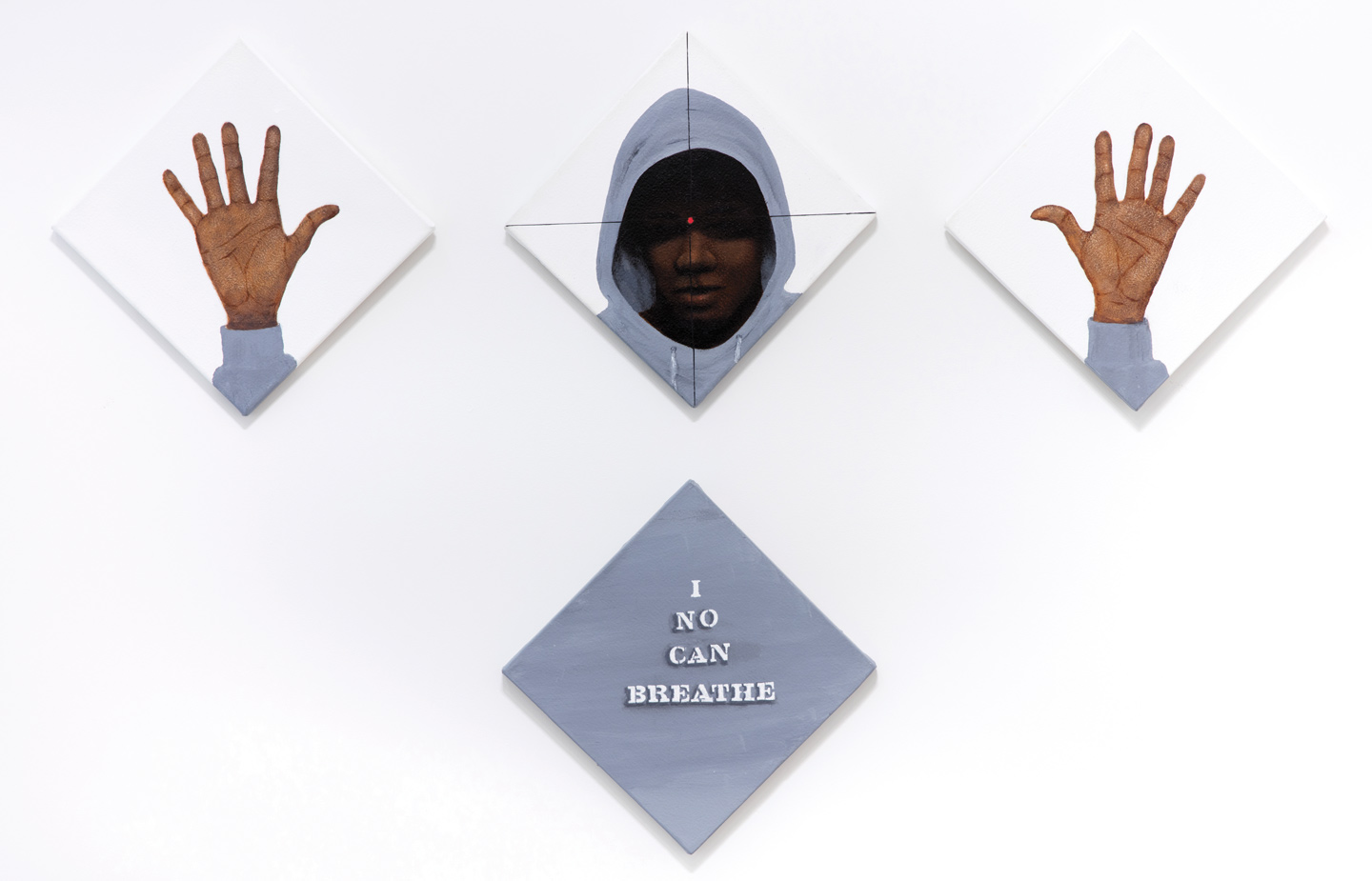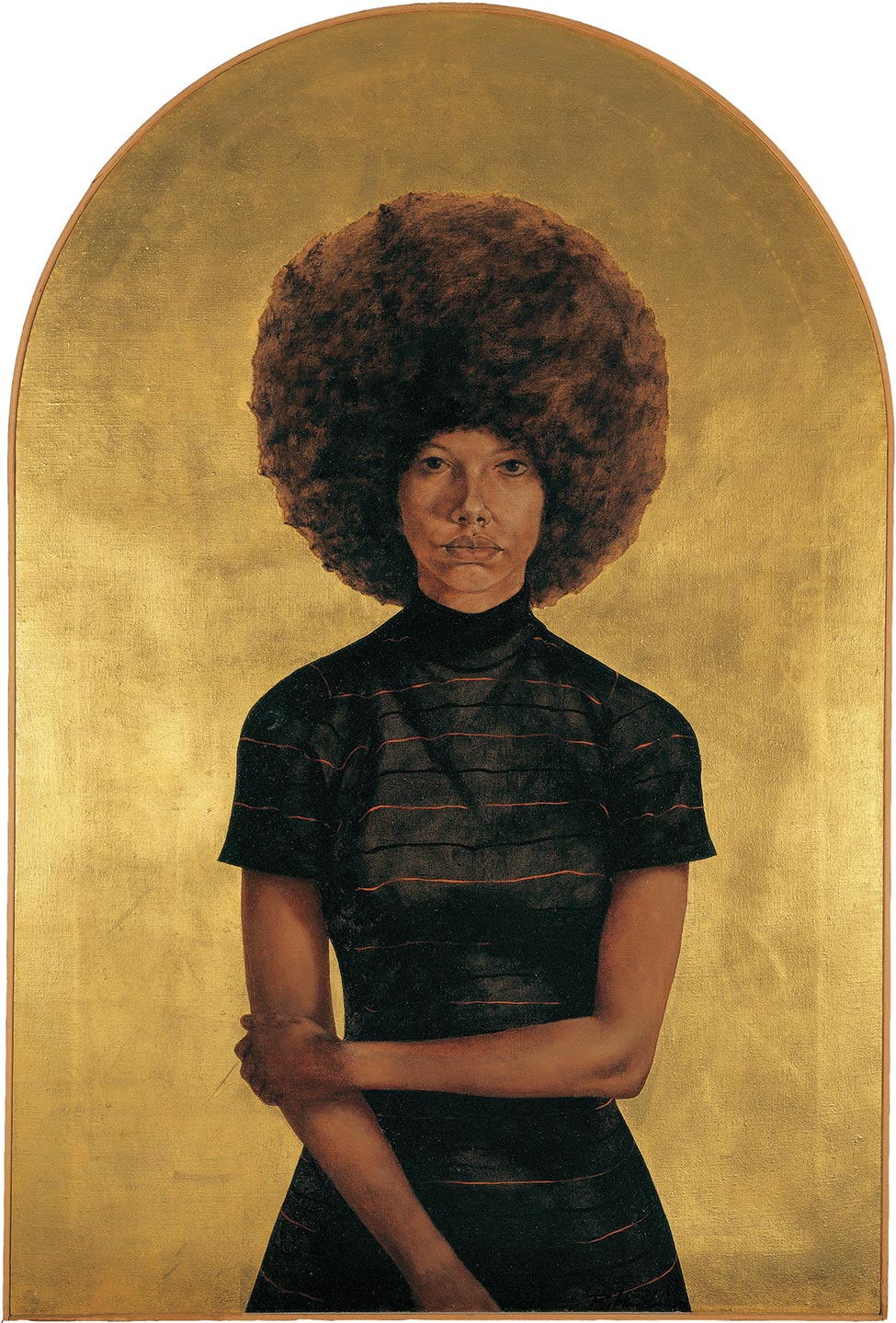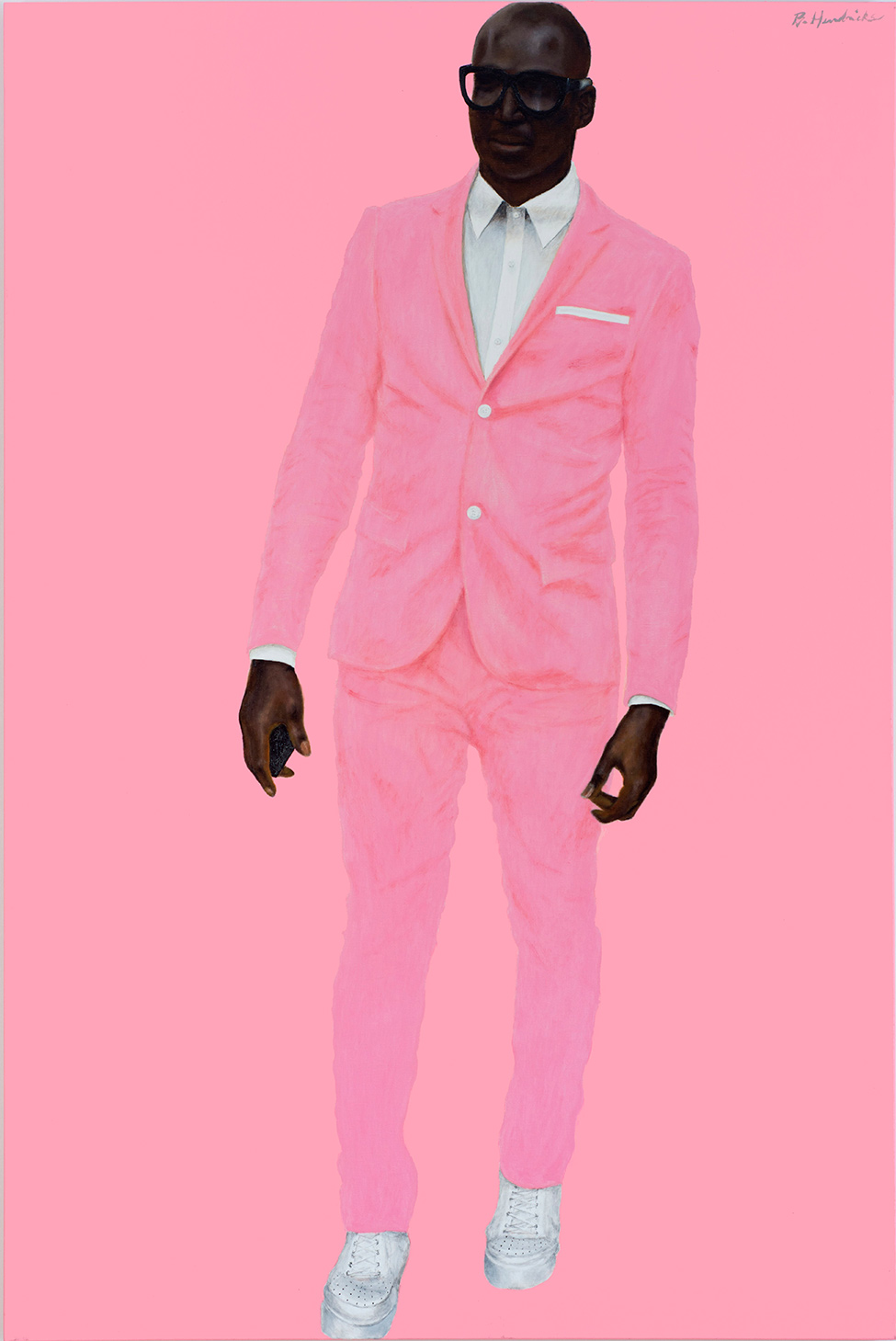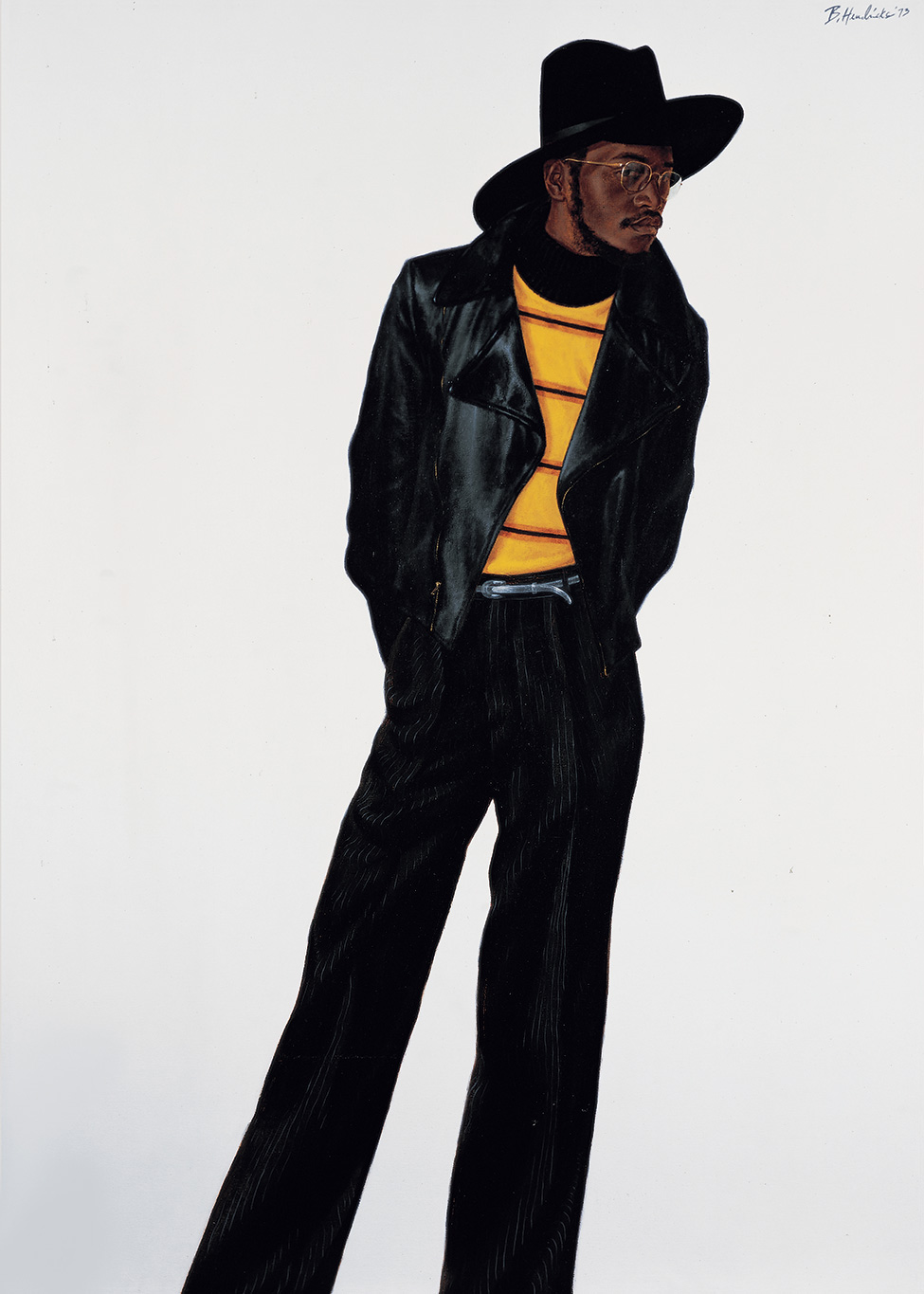The Body Is An Action Figure
Professor emeritus Barkley L. Hendricks passed away on April 18, 2017. He gave his final interview to CC Magazine.
Barkley L. Hendricks’ images of friends, neighbors and passersby in a variety of everyday activities capture an astonishing range of context. These figurative portraits include revelatory surface emotions and attitudes in a wide-ranging spectrum of social, racial and cultural diversity—often through the prism of perceived political situations. But the artist The Atlantic called the “master of black postmodern portraiture” also painted lush landscapes, was a visionary photographer whose shots of jazz musicians are legendary and was a passionate musician.
Over his career, Hendricks’ exhibitions include the widely traveled Birth of the Cool, Hearts Hands Eyes Mind and Barkley L. Hendricks, the latter of which debuted in 2016 at the Jack Shainman Gallery in Manhattan.
Hendricks passed away on April 18, 2017. He was 72 years old. Two weeks before his death, the artist sat down with CC Magazine and gave his final interview.
Rick Koster As a Master in Fine Arts student at Yale, you studied photography extensively with faculty members such as Walker Evans and Thomas Brown. What did you learn from photography that became part of your painting process—and that you might not know otherwise?
Barkley L. Hendricks I wouldn’t say ‘that I wouldn’t have known otherwise.’ I spent most of my time at Yale with photographers because not many of the painters there were working in a representational context. I was already involved with the camera and the darkroom process, but when I got to Yale I learned a lot more of what photography could introduce me to—in and of itself. Grayscale images, the scale of photographs, the approach of photographers to their subject matter … all of those things added to my painting focus. And it added another set of artists to my associations.
RK Did you immediately implement these techniques into your painting?
BH Well, at the time, I was painting live models. That’s what I was brought up on at the Philadelphia Academy of Fine Art, but I started to move away from that when, at a certain point, I didn’t have the time to work with models. So I started to use photographs.
RK Clothing and style are major components in a lot of the portraits you paint, and I’m interested in your thoughts on fashion as reflective of society and identity. Can a certain look, or style, inspire a particular piece to go in a certain direction?
BH Style is an element I’ve always been involved with in an everyday sense of the word. If I thought friends or people I might meet on the street had a particular outfit or look I thought might make an interesting subject—and they were nice enough to let me photograph them or they would sit for me—I would explore that. I find fashion fascinating, and it’s very interesting and revealing how people choose to dress or look—or when people comment on the way someone looks.
RK I would think that, having taught at a college for 39 years, you’ve seen plenty of fashion fads come and go and probably come back again.
BH You know, people might look at one of my paintings and say it suggests the ’60s or whatever, and rather than argue with them I let it go because it might not have anything to do with the ’60s at all. Maybe that’s how the viewer thinks the ’60s were supposed to look. Recently, I was looking at an article in The New York Times about jean jackets. People have been wearing them since they first appeared—and you can’t tell from them what time period it was because they never change. That’s interesting. Or people see bell bottoms and think of a certain era—but bell bottoms are back in style again. So you never know.
RK Talk about the idea of clothing defining a subject as opposed to the idea of painting or drawing a nude.
BH Fashion has always been very important to me; I’ve done more fashion portraits than nudes. Part of my job was to teach that, but I taught the clothed figure more. I would have a drawing class and start with a nude model—and gradually dress them and have the models go through some motion or movement. The body is an action figure—clothed or otherwise—and it’s important as a teacher and an artist to master the types of movement associated with each.
RK You’re a musician and spent a great deal of time, back in the day, shooting photographs of famous jazz stars. Your images of Lionel Hampton, Randy Weston, Herbie Hancock, the Modern Jazz Quartet, Miles Davis, Sonny Rollins, Dexter Gordon, Dizzy Gillespie—and on and on—are magnificent. How much has music had an effect on your work?



